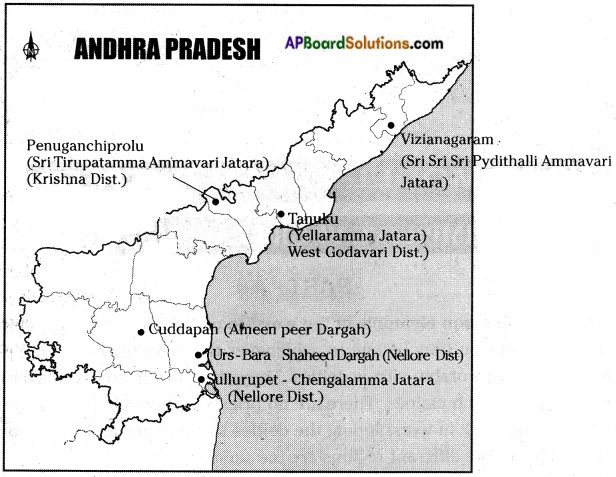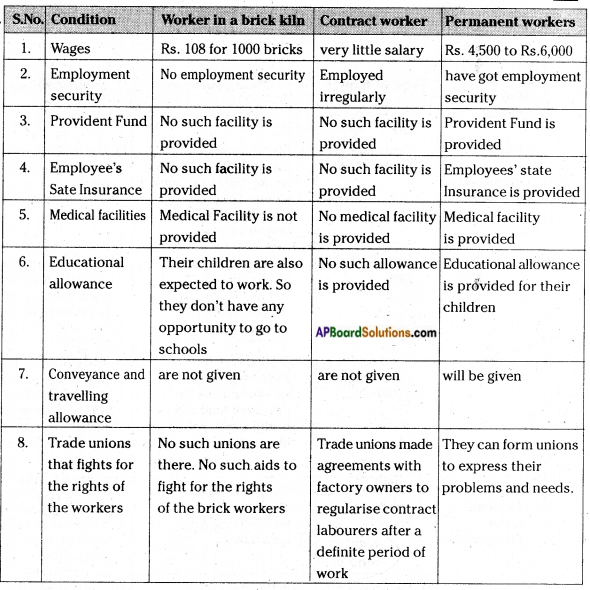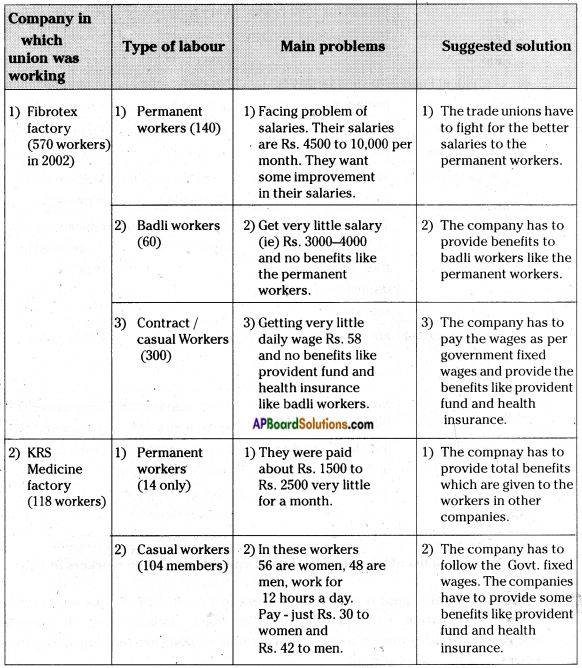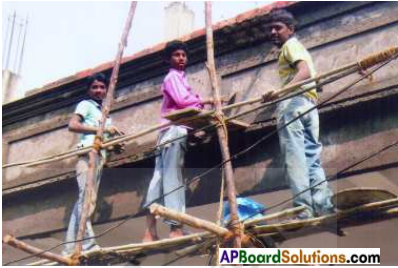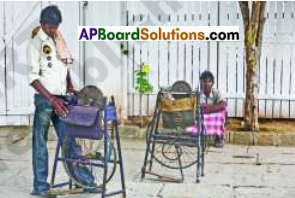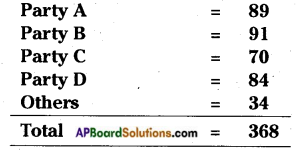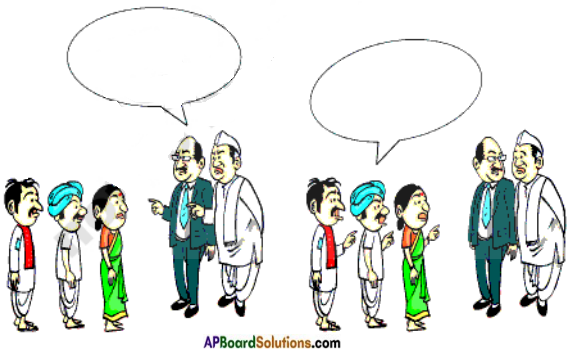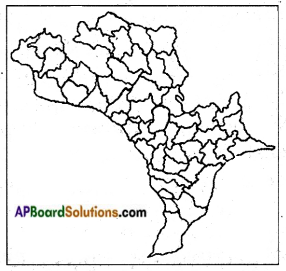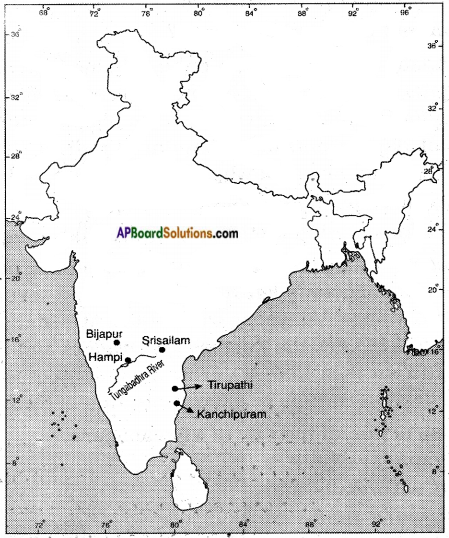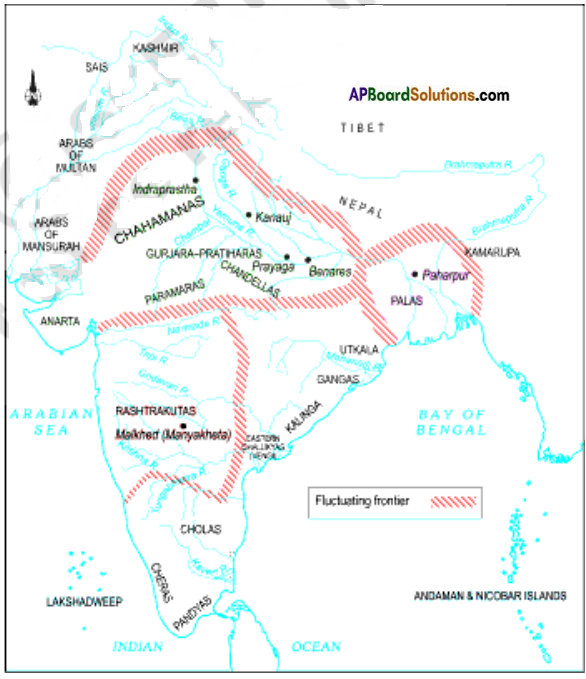SCERT AP Board 7th Class Social Solutions 21st Lesson Devotional Paths to the Divine Textbook Questions and Answers.
AP State Syllabus 7th Class Social Studies Solutions 21st Lesson Devotional Paths to the Divine
7th Class Social Studies 21st Lesson Devotional Paths to the Divine Textbook Questions and Answers
Improve Your Learning
Question 1.
Fill in the blanks:
a) Ramanuja was influenced by the ……………….
b) ……………. and ……………. were advocates of Virashaivism.
c) ……………. was an important center of the Bhakti tradition in Maharashtra.
Answer:
a) Alvars
b) Basavanna, Allama Prabhu and Akkamahadevi
c) Pandharpur
![]()
Question 2.
Describe the beliefs and practices of the Nathpanthis, Siddhas, and Yogis.
Answer:
The beliefs and practices of Nathpanthis, Siddhacharas, and Yogis were.
- They criticized rituals and others aspects of conventional religion and social order.
- They advocated renunciation of the world.
- They believed salvation lay in meditation on the formless ultimate reality and the realization of oneness with it.
- To achieve salvation they advocated intense training of the mind and body through practices like Yogasanas, breathing exercises, and meditation.
- Their criticism of conventional religion created the ground for devotional religion.
Question 3.
What were the major ideas, expressed by Kabir? How did he express them?
(or)
Write about the major idea of Kabir.
Answer:
- Kabir’s teachings were based on a complete rejection of the major religious traditions.
- He openly ridiculed fill forms of external worship of both Hinduism and Islam.
- Kabir ridiculed the pre-eminence of the priestly classes and the caste system.
- Kabir believed in a formless Supreme God.
- He preached that the only path to salvation was through bhakti or devotion.
- He expressed his ideas through a vast collection of verses called Sakhis and pads composed by him.
![]()
Question 4.
What were the major beliefs and practices of the Subs?
Answer:
- Sufis were Muslim mystics.
- Sufis rejected outward religiosity.
- They emphasized love and devotion to God and compassion towards all fellow human beings.
- The Sufis rejected the elaborate rituals and codes of behavior demanded by Muslim religious scholars.
- Sufis sought union with God.
- Sufis too believed that the heart can be trained to look at the world in a different way.
- They developed elaborate methods of training using zikr (chanting of a name), contemplation Sama (singing), raqs (dancing), discussion of parables, breath control, etc., under the guidance of a pir.
Question 5.
Why do you think many teachers rejected prevalent religious beliefs and practices?
Answer:
Up to the medieval period. Indian society was moaning under the burden of evil social practices and unscrupulous religious beliefs. There were social differences based on birth. Society was divided into many castes. The lower class of the people was treated as untouchables. The pre-eminency of the priestly classes was envied by the people of other castes. The burden of expensive rituals, evil aspects of conventional religion, Idol worship, polytheism, and unscrupulous religious beliefs made religion a burden on society. So many teachers rejected prevalent religious beliefs and practices.
Question 6.
What were the major teachings of Baba Guru Nanak?
Answer:
- Guru Nanak emphasized the importance of the worship of one God.
- He insisted that caste, creed or gender was irrelevant for attaining liberation.
- In his opinion liberation was not the state of inert bliss, but rather the pursuit of active life with a strong sense of social commitment.
- He emphasized right worship, the welfare of others, and purity of conduct.
- Guru Nanak’s idea of equality had social and political implications.
![]()
Question 7.
For either the Virashaivas or the saints of Maharashtra, discuss their attitude towards caste.
Answer:
Either the Virashaivas or the saints of Maharashtra strongly opposed the caste system. The Virashaivas strongly argued for the equality of all human beings. They were against scriptural ideas about caste. On the other hand, the saints of Maharashtra rejected the social differences based on birth. They encouraged universal brotherhood by insisting that bhakti lay in sharing others’ pain. They were taught to serve fellow human beings in need. ,
Question 8.
Why do ordinary people still remember Mirabai?
Answer:
- Though Mirabai was a princess, she became a disciple of Ravidas, an untouchable.
- She openly challenged the norms of the upper castes.
- So Mirabia became popular with the masses and the ordinary people would like to preserve the memory of Mirabai.
Question 9.
Read the para under the title ‘A Closer Look: Kabir’ on page 186 and comment on it.
A Closer Look: Kabir
Kabir, who probably lived in the fifteenth-sixteenth century, was one of the most influential saints. He was brought up in a family of Muslim julahas or weavers settled near the city of Benares (Varanasi). We have little reliable information about his life.
We get to know of his ideas from a vast collection of verses called sakhis and pads said to have been composed by him and sung by wandering bhajan singers. Some of these were later collected and preserved in the Guru Granth Sahib, Panch Vani, and Bijak.
Kabir’s teachings were based on a complete, indeed vehement, rejection of the major religious traditions. His teachings openly ridiculed all forms of external worship of both Hinduism and Islam, the pre-eminence of the priestly classes, and the caste system. The language of his poetry was a form of spoken Hindi, widely understood by ordinary people.
Kabir believed in a formless Supreme God and preached that the only path to salvation was through bhakti or devotion. Kabir drew his followers from among both Hindus and Muslims.
Answer:
Kabir was a mystic poet and saint of India. His writings have greatly influenced the Bhakti movement. He lives perhaps during 1398 – 1448. He had an enormous influence on Indian philosophy and on Hindi poetry. In India, he is perhaps the most quoted author, with the exception of Tulsidas.
![]()
Question 10.
Write about a festival celebrated by the people together in your area?
Answer:
We celebrate Ganesh Chaturthi together in our area. We have a committee in our area to organize this festival. We celebrate in a ‘Mandapam’ in our street. All the people in our street contribute to this festival. We celebrate this festival for 11 days.
